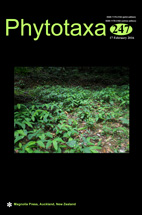Abstract
The unique character of biotas on table mountains (tepuis) is well documented for macroscopic organisms. However, much less is known about the microorganisms inhabiting these unusual and diverse biotopes. Previously, new algal and cyanobacterial taxa have been described from South American table mountains, providing evidence for the frequently disputed concept of microorganismal endemism. The present study adds additional support for this concept. A number of unusual microalgae were found during a 2012 expedition on the top of Churí-tepui (Chimantá Massif, Venezuela). These organisms were thoroughly examined and we herein propose the establishment of two new species of cyanobacteria—Schizothrix venezuelana sp. nov., Porphyrosiphon latissimus sp. nov., two diatoms—Eunotia churiensis sp. nov. and E. multirimoportulata sp. nov.; and one filamentous green alga, for which we also present molecular phylogenetic support, Ekerewekia churiensis gen. et sp. nov. (Chlorophyta). These novel species are morphologically unique and because no such forms have been reported elsewhere in the world, they are potentially endemic to tepuis.

